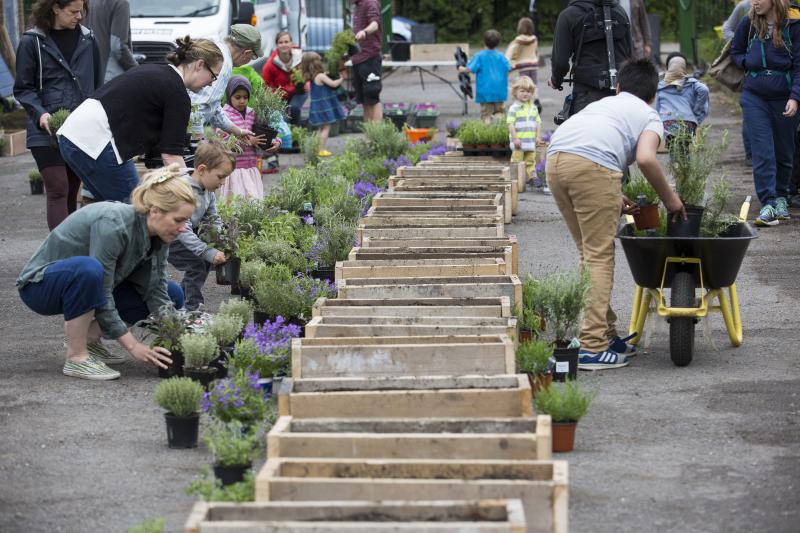Near you
Your local authority can’t solve the climate and environmental crisis alone, but it can help lower emissions and protect your most vulnerable neighbours from things like fuel poverty and air pollution.
Armed with data, residents and councils can work together to make communities better for everyone. Will you join them?
Are you interested in…
We'll show you data for your {type}
Northern Ireland
Friends of the Earth has analysed data on how different local authority areas are performing on the actions needed to address the climate emergency but unfortunately there is much less data collected by local authority areas in Northern Ireland.
However, our Northern Ireland team has produced a 40-point plan for actions that councils can take to address the climate emergency.
The team has also produced a Climate Action Plan for Northern Ireland which has five priorities.
The priorities in our Climate Action Plan are:
Empower communities to lead the recovery by using participatory decision-making processes, making sure those most impacted by environmental harm are listened to, and with legal changes so that communities can hold the Northern Ireland government to account. We need a democratic revival.
Introduce a Wellbeing of Future Generations Bill. Alongside the promised Climate Change Act, such legislation will ensure that the voices of young people and consideration of the wellbeing of future generations are considered properly in decision-making. A similar act has been successfully pioneered by Wales.
Follow the lead of New Zealand, and instead of measuring progress and shaping economic policy towards GDP growth, develop and use a Living Standards Framework. Gross Domestic Product is a poor measure of progress because it can increase while the environment is degraded and people’s wellbeing declines. The economy and fiscal measures should be judged on how well they increase wellbeing.
Power Northern Ireland with renewable electricity. Our homes can be heated using renewable electricity and heat pumps, nearly all transport can be electric, and electricity can power much of business. Currently, the Executive is wedded to the concept of natural gas as a bridging fuel to a low-carbon energy sector. But Northern Ireland doesn’t need a future dominated by fossil fuels. It already produces a higher proportion of its electricity from renewable energy than England and Wales. Oil- and gas-central heating should be phased out by 2030.
Reverse the decline in nature, to include a Just Transition plan for farmers to halve livestock production by 2030, a moratorium on industrial farming, and diversification to make farming nature friendly. This should involve restoring peatland and ensuring family farmers get rewarded for nature-friendly farming and funded to diversify, including into tree planting and timber production. And rejecting intensive livestock production, which too often relies on imported animal feed from areas of rainforest deforestation or harms nature sites through pollution.
Why does it matter?
Big change starts small. The decisions we make in our local communities about climate and nature can help bring change at a national level and transform our future.
With science and data leading the way, we believe that together we can create healthier, more climate-friendly neighbourhoods. That’s why we’ve collected insightful data on a range of issues specific to your neighbourhood, like transport, insulation and fuel poverty.
Whether you’re part of a community group, a council worker or an interested resident, pop your postcode in the tool above to learn about your local area and help inspire change.



